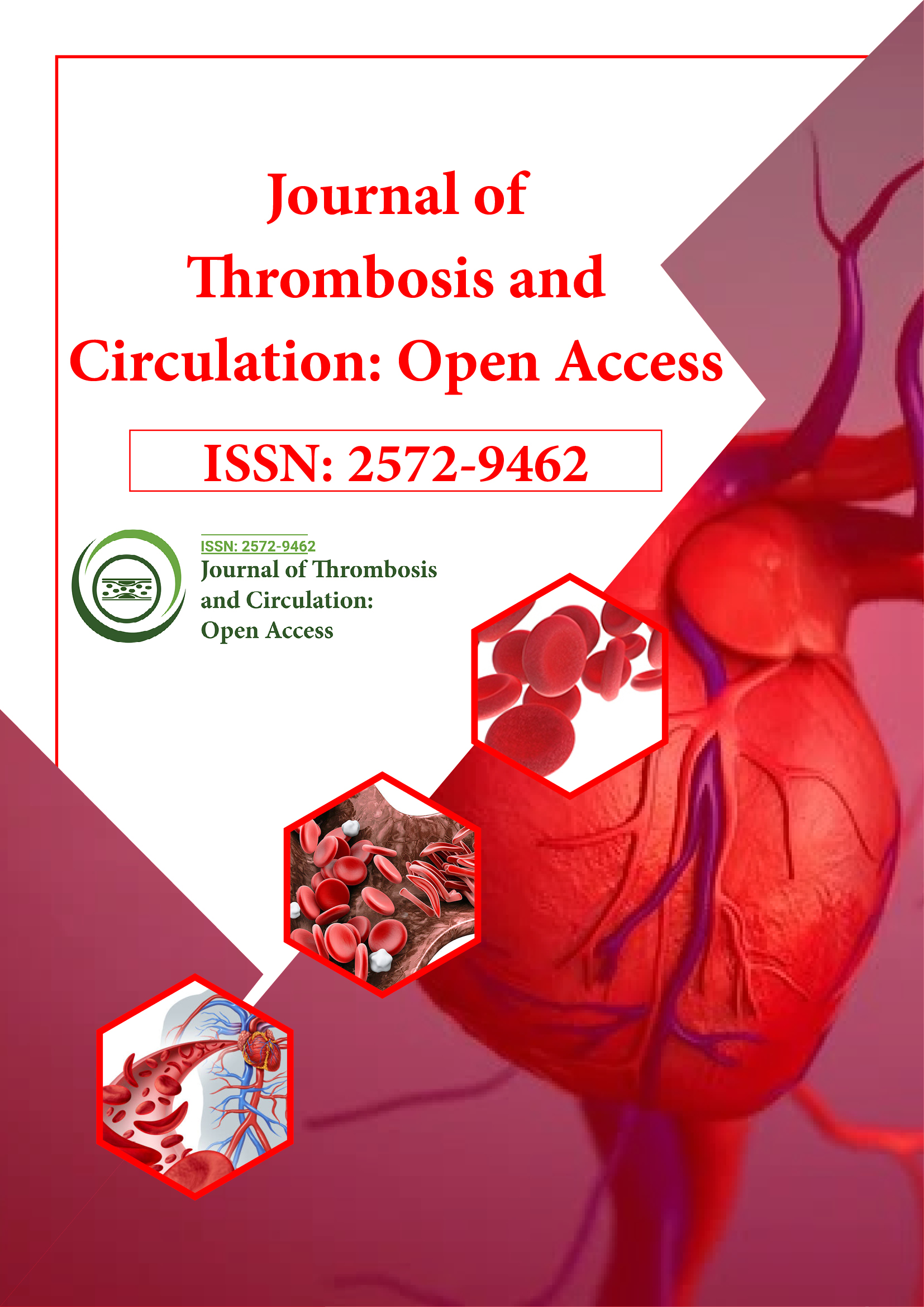Indexed In
- RefSeek
- Hamdard University
- EBSCO A-Z
- Publons
- Google Scholar
Useful Links
Share This Page
Journal Flyer

Open Access Journals
- Agri and Aquaculture
- Biochemistry
- Bioinformatics & Systems Biology
- Business & Management
- Chemistry
- Clinical Sciences
- Engineering
- Food & Nutrition
- General Science
- Genetics & Molecular Biology
- Immunology & Microbiology
- Medical Sciences
- Neuroscience & Psychology
- Nursing & Health Care
- Pharmaceutical Sciences
Perspective Article - (2025) Volume 11, Issue 2
Circulatory Consequences of Atrial Fibrillation: Thromboembolism Risk and Advances in Stroke Prevention
Daniel Fiorenzi*Received: 30-May-2025, Manuscript No. JTCOA-25-29344; Editor assigned: 02-Jun-2025, Pre QC No. JTCOA-25-29344 (PQ); Reviewed: 16-Jun-2025, QC No. JTCOA-25-29344; Revised: 23-Jun-2025, Manuscript No. JTCOA-25-29344 (R); Published: 30-Jun-2025, DOI: 10.35248/2572-9462.25.11.309
Description
Atrial Fibrillation (AF) is the most common sustained cardiac arrhythmia encountered in clinical practice, affecting millions globally. While its hallmark is electrical and structural remodeling of the atria, the broader vascular and circulatory implications of AF extend well beyond rhythm disturbance. The most feared complication of atrial fibrillation remains systemic thromboembolism, particularly ischemic stroke. This arises due to stasis of blood within the fibrillating atria, hypercoagulability and endothelial dysfunction together constituting the classic Virchow’s triad. Over the past decade, significant strides have been made in understanding the thromboembolic risk of AF and refining strategies for effective and individualized stroke prevention.
The Left Atrial Appendage (LAA) is central to thrombus formation in AF. The erratic atrial contractions result in blood pooling within the LAA, where sluggish flow promotes thrombus formation. Over 90% of thrombi in non-valvular AF originate in this structure. Histological studies have revealed endothelial denudation, inflammatory cell infiltration, and local procoagulant protein expression within the LAA, suggesting that local tissue pathology adds to the mechanical stasis in creating a thrombogenic environment.
Traditional stroke risk assessment in AF has relied on the CHADS2 and CHA2DS2-VASc scores, which consider clinical risk factors such as heart failure, hypertension, age, diabetes, prior stroke and vascular disease. While these tools are widely used, they do not directly incorporate biomarkers or imaging findings that may reflect atrial or systemic thrombogenicity. There is growing interest in developing more comprehensive models incorporating left atrial size and function (e.g., via echocardiography or MRI), circulating biomarkers (such as NT-proBNP, D-dimer and troponin) and genetic risk factors.
Anticoagulation is the cornerstone of thromboembolic prevention in AF. Vitamin K Antagonists (VKAs), primarily warfarin, have historically reduced stroke risk by approximately 60–70% in patients with AF. However, they are limited by narrow therapeutic windows, dietary interactions and the need for regular INR monitoring. The advent of Direct Oral Anticoagulants (DOACs) including apixaban, rivaroxaban, dabigatran and edoxaban has transformed AF management. These agents provide consistent anticoagulation with fewer interactions, no requirement for monitoring and similar or superior efficacy and safety compared to warfarin, particularly in reducing intracranial hemorrhage.
However, anticoagulation therapy is not without risks. Bleeding complications, particularly gastrointestinal and intracranial hemorrhages, remain major concerns. Clinical decisions must weigh individual bleeding risk, often assessed using the HAS-BLED score, against thromboembolic risk. Renal function, frailty, polypharmacy and fall risk are critical considerations in the elderly AF population, where stroke and bleeding risks are both amplified.
For patients with contraindications to long-term anticoagulation, Left Atrial Appendage Occlusion (LAAO) has emerged as an alternative strategy. Devices such as the Watchman and Amplatzer occluders aim to isolate the LAA from systemic circulation, thereby preventing thrombus embolization. Randomized trials like PROTECT AF and PREVAIL have shown non-inferiority of LAAO compared to warfarin for stroke prevention in select patients. While these procedures carry procedural risks, especially pericardial effusion and device-related thrombosis, technological advancements and operator experience continue to improve safety profiles.
Beyond structural interventions, rhythm control strategies, including catheter ablation, may reduce thromboembolic risk indirectly by restoring and maintaining sinus rhythm. However, stroke prevention remains necessary irrespective of rhythm control success, especially in high-risk individuals. The role of anti-inflammatory agents and agents targeting atrial fibrosis is being explored in reducing AF burden and associated thrombotic complications.
Emerging research is exploring individualized anticoagulation strategies, such as genotype-guided therapy and time-in-range optimization for VKAs. Additionally, the role of machine learning in refining stroke prediction models and optimizing DOAC dosing is a growing area of interest. In parallel, large-scale population studies are evaluating the impact of integrated care models combining anticoagulation, rhythm control, risk factor management and patient education on clinical outcomes.
In conclusion, atrial fibrillation presents a significant and preventable risk of systemic thromboembolism. While substantial progress has been made in anticoagulation therapy and stroke prevention, challenges remain in balancing efficacy and safety, especially in complex patients. A comprehensive and individualized approach, informed by clinical, biomarker and imaging data, offers the best opportunity to reduce thromboembolic events and improve the vascular outcomes of patients with AF.
Citation: Fiorenzi D (2025). Circulatory Consequences of Atrial Fibrillation: Thromboembolism Risk and Advances in Stroke Prevention. J Thrombo Cir. 10:309.
Copyright: © 2025 Fiorenzi D. This is an open-access article distributed under the terms of the Creative Commons Attribution License, which permits unrestricted use, distribution, and reproduction in any medium, provided the original author and source are credited.
